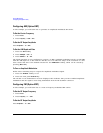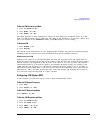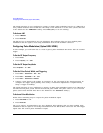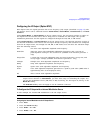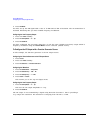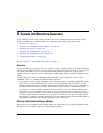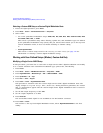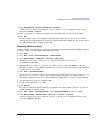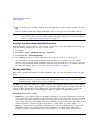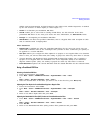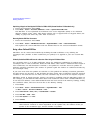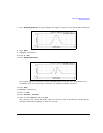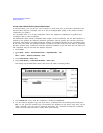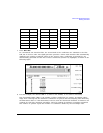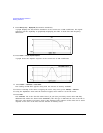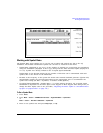
146 Chpater 6
Custom Arb Waveform Generator
Working with Filters
12. Enter a file name (for example, EDGEM1) using the alpha keys and the numeric keypad, and press
Enter.
The user-defined multicarrier digital modulation state is now stored in non-volatile memory.
NOTE The RF output amplitude, frequency, and operating state settings (such as RF On/Off) are
not stored as part of a user-defined digital modulation state file. For more information,
refer to “Using Data Storage Functions” on page 55.
Recalling a User-Defined Custom Digital Modulation State
In this procedure, you learn how to select (recall) a previously stored custom digital modulation state
from the Memory Catalog (the Catalog of DMOD Files).
1. Press
Preset.
2. Press
Mode > Custom > ARB Waveform Generator > Setup Select.
3. Press
More (1 of 2) > Custom Digital Mod State.
4. Press
Select File to select a custom modulation state from the Catalog of DMOD Files.
The user-defined custom digital modulation state should now be recalled from non-volatile
memory. Because the RF output amplitude, frequency, and operating state settings are not stored
as part of a user-defined digital modulation state file, they must still be set or recalled separately.
For more information, refer to “Using Data Storage Functions” on page 55.
Working with Filters
This section provides information on using predefined (page 147) and user-defined (page 148) FIR
filters.
NOTE The procedures in this section apply only to filters created in either the Custom Arb
Waveform Generator or Custom Real Time I/Q Baseband mode; they do not work with
downloaded files, such as those created in Matlab.
The Filter menu selections enable you to apply a filter to the generated signal, define a finite impulse
response (FIR) filter, change a Root Nyquist or Nyquist filter alpha, change a Gaussian filter BbT, or
restore all filter parameters to their default state. In Custom Real Time I/Q mode, you can also
optimize a FIR filter for Error Vector Magnitude (EVM) or Adjacent Channel Power (ACP)
Predefined Filters (
Filter > Select)
• Root Nyquist is a root-raised cosine pre-modulation FIR filter. Use a Root Nyquist filter when you
want to place half of the filtering in the transmitter and the other half in the receiver. The ideal
root-raised cosine filter frequency response has unity gain at low frequencies, the square root of
raised cosine function in the middle, and total attenuation at high frequencies. The width of the
middle frequencies is defined by the roll off factor or Filter Alpha (0 < Filter Alpha < 1).
•
Nyquist is a raised cosine pre-modulation FIR filter. You can use a Nyquist filter to reduce the
bandwidth required by a signal without losing information. The ideal raised cosine filter
frequency response comprises unity gain at low frequencies, a raised cosine function in the



